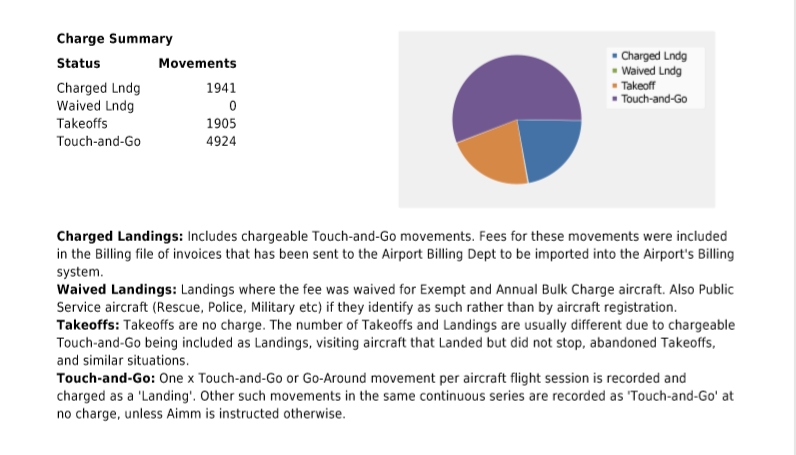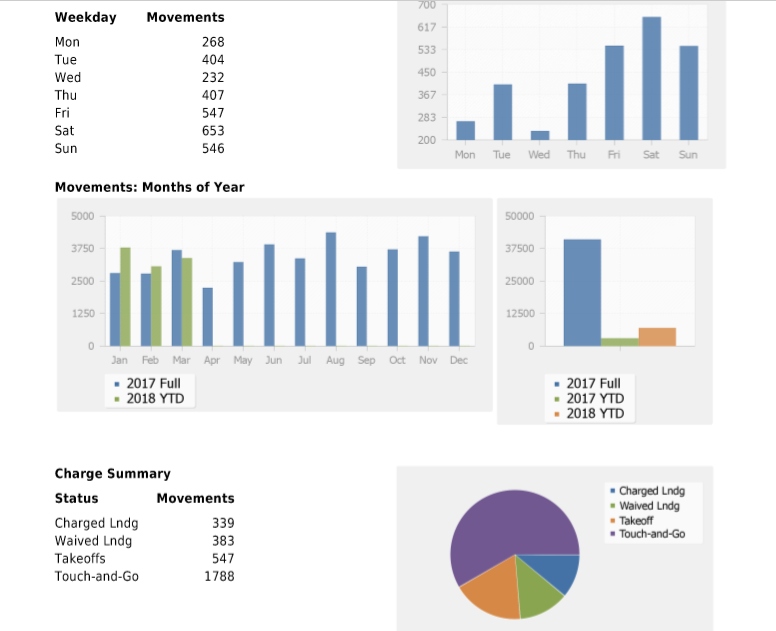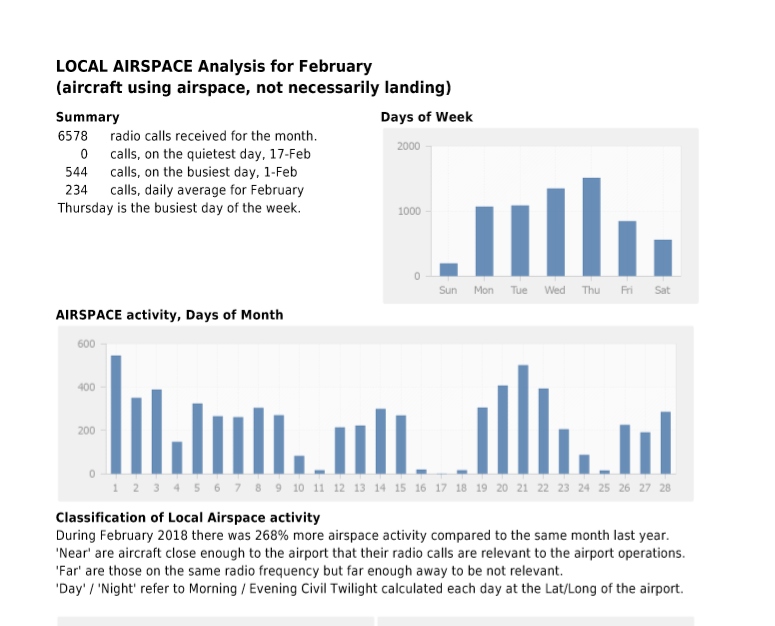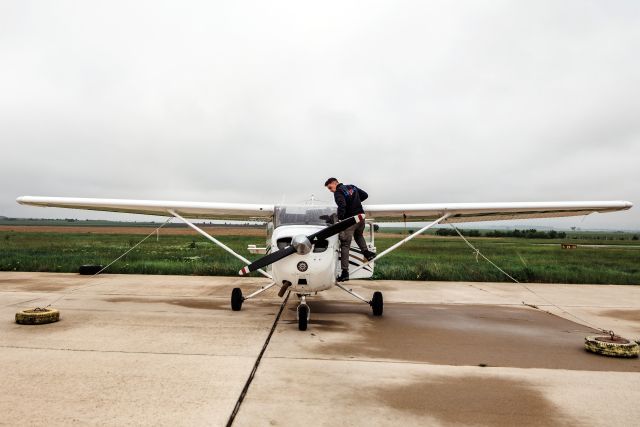
Automation with Aimm-ADSB
Aimm-ADSB is a highly automated system that enters movements for itself directly from the digital ADSB signals broadcast 60 times a minute by many aircraft. This avoids the need for manual transcription of those aircraft, improves accuracy, and substantially reduces the work involved allowing a fixed monthly subscription to cover the whole cost of the service. Even if an airport has many non-adsb equipped aircraft, the busy commercial and training aircraft usually account for the majority of the movements. Automated landings can be seen on the 'movements' webpage within one minute of the flight ending, often before the passengers have reached the terminal.
ADSB and / or Voice Monitoring?
Both CASA in Australia and CAA in NZ are moving to ADSB monitoring for Air Traffic Control, and more aircraft are fitting ADSB to be able to enter controlled airspace. Even once all aircraft have ADSB, the Airports will continue to need to record ALL Voice Radio Calls, even those transitting past and from ADSB equipped aircraft where the voice call is not transcribed. Investigation Authorities need to have the pilot Voice calls available to identify who said what and when to other traffic. Over a long period the Aimm principals have observed that most incidents are caused by someone not following the Airport's published procedures... and the Airport needs to be able to show this to avoid being held accountable for an incident that they did not cause.
How does it work?
Aimm uses Cameras, Radio calls and ADS-B, plus other methods, to identify for every movement: the time, date, the specific aircraft call sign or flight number, registration, aircraft weight, type of aircraft, aircraft operator with full name and address, type of movement (Takeoff / Landing / TnG), and runway or helipad approach in use. ADSB is providing an increasingly large part of the data, but Voice-derived data will continue to be essential for incident investigation.
How are these Reports used?
Aimm provides Management Reports, and an invoice file in various formats to suit the Airport's existing billing system.
- Dashboard Report: Sent within 7 days of the end of each month, this is a summary of the month's activity in graphical form for Managers and Board members. It picks out the KPIs to provide an overview of the situation, showing the numbers and types of aircraft (planes, helicopters, gliders etc), their weights, runway used, day or night, and day of week. Comparison graphs show numbers of movement year-on-year and year-to-date. Aimm's Dashboard Report provides the knowledge from which to make fully informed decisions. Board / Supervising Committee members at an Aimm Client find this report so useful that they often instruct that they are all to receive it personally each month before each Board meeting.


More detail from the management Dashboard Report identifying changes in activity, which in this case highlight a 268% increase over the last 12 months... which is good news, but the management does need to be aware of this so they can review Health-and-Safety procedures, landing fees, and support staff... are they still appropriate for the considerable growth that has occurred?
- Movement / Billing Report: Sent within 7 days, this is a .CSV data file with the exact details of the movements by time and date, identifying the aircraft registration, weight, runway used, its operator with their full name and address from the official register, and aircraft registration. Normally sent to the accounts-receivable Dept of the Airport to be importing into the Airport's existing billing system for fully automated billing of Landing Fees. Many file formats are supported.
- Regulatory Reporting: At the required intervals, a report is sent for submitting to the Civil Aviation regulator authority for the Airport to remain in compliance. It describes fully how to download the required form(s) and file them on-line. How, when , and the numbers to quote.
- Archive Spreadsheets:Spreadsheets listing each Movement and its information, are available for any period from the last few minutes to three years ago in CSV format able to be imported in Excel or similar to 'Drill down' and extract required information.
- Noise Footprint Reporting: Many airports have limits on noise. Aimm reports the LDN counts on each monthly 'Dashboard' for use by Acoustic Consultants to prepare their reports to show noise compliance.
How cost-effective is Aimm?
Very. The Aimm developers have a long history in Data Analytics (extracting the meaning from raw computer data) and analysis of patterns in data. Aimm makes full use of the centralised computing power available on 'Cloud' based systems, and ADSB digital broadcasts from aircraft, to have the computer itself do much of the work and thus considerably reduce the human input required by the Transcription Operators. In many cases no manual transcription is required at all.


How to know if Aimm will meet my Airfield / Airport's needs?
Try it and see. Aimm staff can discuss the challenges and opportities that your Airport faces and how Aimm could handle them. If it looks like this would be a worthwhile improvement on your current method, try it and see... Aimm does not require a committment or set length contract, and any Client can discontinue the system anytime without penalty. We get very few who do not continue and are very willing to let our system's performance speak for itself.
Are Data Security / Privacy / Radio Regulations requirements met?
Yes. The operators of Aimm have a Health Industry Computing background, where they have access to confidential patient information as necessary to assist Health Professionals to serve patients efficiently. Similarly, Aimm has access to confidential air traffic information as necessary to assist Aviation Organisations to serve aviators efficiently. Aimm applies the Health Industry's standards of confidentiality and security to the information on the Aimm system, and makes it possible to monitor aircraft movements while preserving secrecy of the aircraft operator's name and address and movements. Aerodrome staff can enter / modify charges / delete any specific movement they wish, or Aimm staff can do this on behalf of the Aerodrome. In neither case does the operator see the name or address of the aircraft operator.

The Radio Regulations require anyone overhearing information that is 'not intended for their information', to preserve secrecy of the communication. The Compliance section of the Ministry in charge of Radio Spectrum has advised (original document on file):
."... consideration of the safety issues involved and consultation
with the Civil Aviation Authority indicate that the information about a pilot's
intentions is relevant to all parties in the aerodrome area, including other
pilots, the aerodrome operators and any other parties who may be affected by
the aircraft movements. Accordingly, the Ministry considers that aerodrome operators
are among the entitled recipients of these broadcasts and are not committing
an offence by using, reproducing or disclosing those radiocommunications..."
Aimm provides services to airports, using information observed visually or collected by radio / camera equipment owned or leased by the airport, located on the airport, and under physical control of the Airport Operator. Aimm's method of operation preserves the secrecy of the communication with only the Airport and Aimm personel knowing of the content and existence of specific radio communications / camera images. Aimm personel are bound by contractural obligations of secrecy.
The radio call recordings and / or images are archived on-site at the airport for at least three years. Recordings / images uploaded to Aimm's 'Cloud' server are deleted after being played back / viewed, with only the billing information retained. Aimm uses a secure server and encrypted data transfers with the data exchange being initiated by the on-site unit.
Aimm will not pass to any third party, email addresses or other information that identifies an individual flight, pilot, aircraft or airport, for any purpose other than for operations and development of its own system, for assisting its Client Airports to manage their reporting requirements and debtors, and on rare occasions to assist Search and Rescue , Incident Investigation, or other officially sanctioned purposes.
Aimm's Services to Airports
Aimm monitors ALL movements and captures better than 99% of relevant Takeoffs, Landings, Touch-and-Goes at most Airports:
- Airside Personnel Tracker: Who is Airside? Where did they go? When?
- Landing Fees: Cost Effective Billing of Fees
- ADSB, Reports, Statistics and full Data for effective management and reporting
- Regulatory Compliance including CASA (Australia) and CAA (NZ) Part 139 Reporting
- Risk Management, Health and Safety, Incident Investigation
- Complaint Resolution and Noise Management
- Funding for Airports, Revenue generation, Grant Applications, Airport Master Plans.